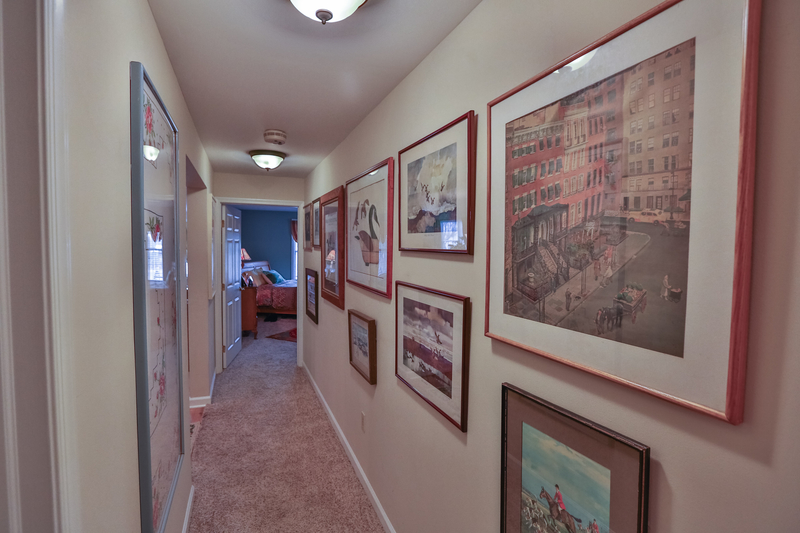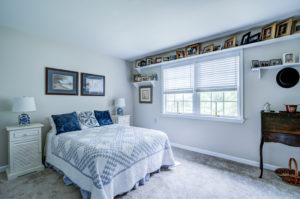Moving from a four bedroom home with a basement, an attic, and a two-car garage to a two bedroom villa with a one car garage can seem overwhelming. Moving from that two bedroom villa to a one bedroom apartment can also be overwhelming. The question usually asked is, “Where do I begin?” And the first answer that usually comes to mind is, “Get rid of all my stuff.” But it doesn’t need to be that way! While it is true that you may not be able to bring every single thing with you if you downsize in square footage, we prefer the term rightsizing when thinking about possessions. At Living Branches, residential living accommodations vary from 475 to 1900 square feet, which means what is downsizing for some, would not be adequate for others. The more important idea is rightsizing – moving a comfortable amount of furniture along with the items you need and the belongings you cherish most, to help you make our house your home.
What should I be doing now?
The best time to begin the rightsizing process is now. Whether you anticipate a move in one year or five years, you can never begin too soon. Chances are a closet in the spare bedroom now houses off season clothing or is used for general storage. When things are out of sight, they’re also out of mind. And when they’re out of mind, there’s a chance we’ve forgotten we even own them!
Many experts suggest you begin in a room that is not used regularly, such as a guest bedroom, because it won’t upset the whole house, but you’ll begin to make progress. As you sort through the rooms in your home, you’ll need to make some hard decisions. When it comes to clothing ask yourself, “Have I worn it in the last year?” or “Does it fit?” If the answer is no, place it in the donation pile.
When it comes to furniture, the decisions aren’t quite as easy. If you want to pass along furniture to friends and family, we suggest having your own auction. Take a photo of every item you don’t plan to take with you and place the photos in an album. Then ask your family members to look through and place their name on items they’re interested in. Once everyone has had a chance to look through the photos, you can discuss interest, work out a time schedule for emptying the item, and arrange for them to pick it up. This system also allows you to see what items are going to be left behind. You can arrange for a local thrift organization to pick them up, or consider having an auctioneer appraise them if they’re antiques.
How much furniture is too much furniture?
One of the most frequent comments we hear from current and future residents is the concern that they’re bringing too much furniture to their new home. These fears can be relieved with smart planning and some compromise.
The first tool that can assist in the decision making process is floor plans. Acquiring a floor plan of the residence you’ll be moving to will allow you begin visualizing your future home. It will note room dimensions and also where windows and closets are located. You’ll then be able to measure your furniture to see if it fits on the wall where you’re envisioning it. If you’re still unsure, there are tools online that allow you to create a drawing of the room and your furniture to scale for an accurate depiction of the space. Additionally, there are services that specialize in helping retired persons move from their family home to a retirement community.
Let Your Lifestyle Help You Decide
It is important to assess how you live your life and to determine what things in your home are parts of your daily routine. Some persons may be accustomed to sitting on a bench at the foot of the bed to tie their shoes each morning, while others don’t mind lacing up in the kitchen. Evaluate your lifestyle and daily routines, making note of your patterns. Then envision yourself completing that task or routine in your future home.
If having a desk is non-negotiable, then you can plan a second bedroom accordingly. Instead of having a bedroom setup with a bed, nightstands, and dressers, perhaps you’ll have a desk, bookshelf, and pull-out loveseat for potential overnight guests. Similarly, if reading by the fire is one of your favorite ways to relax in the cooler months, but your future home won’t have a fireplace, consider purchasing a tv console with a built in faux fireplace.
While the size may change, it will still be the place you call home. And it must be beautiful and functional to feel like home.
Multipurpose
Another tip to keep in mind: think outside the box. The furniture you choose to bring with you will need to work overtime or double duty to accommodate your needs and store your possessions. A china hutch that held dishes and linens exclusively may need to be cleaned out to make room for files or financial documents that were originally kept in a desk. If you’re not sure which sofa to bring, choose the skirted one so storage bins holding gift wrap or board games can be stored underneath and out of sight. Or perhaps select an alternate dining setup. If you’re moving to a smaller accommodation, you may not have room for your dining room suite. It may be a better use of space to sit on stools for everyday dining and have a dining table that folds and stores against the wall, but can easily be expanded when entertaining friends or family.
Collections and Keepsakes
We all have things in our home that have special meaning. These items vary in size and in number. It may be a piece of furniture that has been in the family for generations, a collection of artwork selected on trips overseas, or a special set of china. The first step to evaluating whether these items can move with you to your new home is deciding how important they are to you. Is the quilt from your grandmother something you’d like to pass along to a family member? Or is it something you’d prefer to keep? Do you need to bring all of your wedding china when you use other dishes for everyday dining and entertaining? Or would displaying a few plates on your china hutch be a good compromise in the interest of having space to store other items?
Once you have narrowed down which collections or special items are coming with you, you can find a place for them in your new home. A collection of artwork that may have previously been displayed throughout your entire home could now be hung on a long wall in gallery style. Each time guests pass, it’ll spark conversation and will give you the opportunity to show off your collection. And the numerous frames filled with photos of children and grandchildren could be displayed on shelves around a window in the guest room. You may not have as many rooms or surfaces in your new home to display the pictures, but that doesn’t mean you need to eliminate the frames altogether.
And if you find there are things you’re not able to bring with you, but you’re not ready to part with forever, consider making a keepsake photo album. Take a photo of each item and journal details about where the item was purchased or who gave it to you. The album won’t take up much room and you’ll be able to reminisce for years to come.
There are unique ways to display the items you cherish without overcrowding or cluttering your new home. Some items may need to be sold or given to family, but you don’t need to part with every item that has sentimental value. Finding the right balance is all part of rightsizing.






